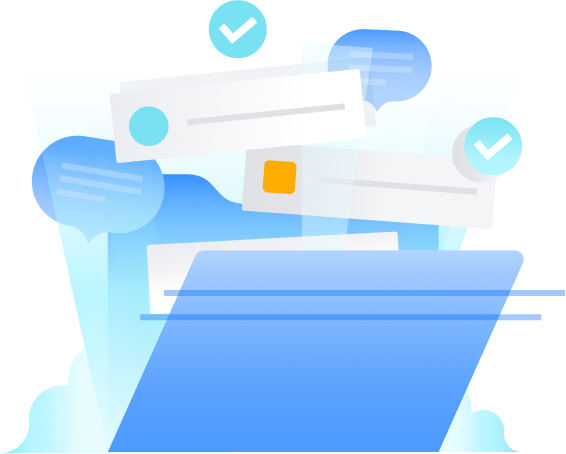3 erreurs à ne pas commettre en matière de collaboration d'équipe
Parcourir les rubriques
Pensez à l'utilisation d'un tour de potier lorsque vous concevez un système de collaboration d'équipe. Bien sûr, vous pouvez jeter un morceau d'argile sur le tour, accélérer le processus et vous retrouver avec quelque chose qui ressemble à un vase. Mais regardez bien, et vous trouverez des imperfections. Vous remarquerez des fissures qui laissent s'échapper de l'eau. Les fissures et les fuites d'eau vont affaiblir le vase. Ainsi, un jour, vous avez ce qui ressemble à un vase parfaitement fonctionnel, et le lendemain, vous vous retrouvez avec les morceaux d'un réceptacle mal conçu entre vos mains (et probablement par terre).
Si vous essayez de créer rapidement un système de collaboration d'équipe, vous commettrez probablement des erreurs courantes. Et quand ces erreurs commenceront à être visibles, cela coûtera beaucoup plus cher à réparer qu'une expérience de poterie ratée.
Examinez ces erreurs courantes en matière de collaboration d'équipe et apprenez à les éviter afin de créer un espace de travail plus fort et plus collaboratif.
La solution : créer une base de connaissances dynamique

Lorsque vous créez une source de référence unique, vous empêchez les membres de l'équipe de se reporter à des informations obsolètes ou de travailler en parallèle. La centralisation des connaissances permet à l'ensemble de l'équipe d'être en phase, ce qui est particulièrement important aujourd'hui : 97 % des employés qui sont passés en télétravail en 2020 veulent continuer à télétravailler au moins une partie du temps. Que votre équipe soit entièrement distante, hybride ou entièrement au bureau, la collaboration est facilitée grâce à une source de référence unique.
Réduisez le changement de contexte et d'outils en faisant de Confluence la plaque tournante de la collaboration et du partage de connaissances. Créez des espaces qui regroupent plusieurs équipes et projets, et utilisez des pages pour organiser vos notes. Lorsque tout se trouve dans un emplacement partagé, il n'est pas nécessaire de fouiller dans les dossiers de fichiers, de chercher dans les boîtes de réception ou d'envoyer des messages privés pour trouver des informations.
La solution : opter pour une collaboration asynchrone
Nous ne disons pas que vous devez annuler toutes vos réunions. Néanmoins, si vous vous réunissez moins souvent, vous disposez de plus de temps et d'espace mental pour la collaboration d'équipe.
Commencez par vos réunions récurrentes. Si vous avez déjà pensé que « cette réunion aurait pu être remplacée par un e-mail », remplacez-la par une collaboration asynchrone dans Confluence. Toutes ces idées, discussions, décisions et notes importantes peuvent être regroupées dans un espace partagé, et les membres de l'équipe peuvent apporter leur contribution quand ils en ont le temps.
Avant de planifier une réunion, mettez en relation les membres de l'équipe concernés dans les pages Confluence, et utilisez les modifications et les commentaires contextuels pour discuter du sujet traité. Laissez-leur le temps de se poser un moment avec leurs pensées et de réfléchir à leurs contributions. Vous constaterez peut-être même que vos coéquipiers les plus discrets sont plus disposés à collaborer. Walesa Demetrius affirme que la réduction de la dépendance de son équipe à l'égard des réunions a mené à des conversations plus riches où les gens parlent avec plus de confiance.
Lorsque vous vous réunissez, partagez des ordres du jour collaboratifs un ou deux jours à l'avance. Cela laisse le temps aux participants de se préparer, ce qui rend la réunion plus efficace. Lorsque vous créez des ordres du jour dans Confluence, vous pouvez tirer parti des modifications en temps réel pendant la réunion pour maintenir la réunion sur la bonne voie.
La solution : utiliser des outils de collaboration pour suivre les projets

La microgestion n'est pas toujours intentionnelle, mais les effets négatifs sont les mêmes. Lorsque vous utilisez des outils de collaboration pour suivre les projets et les assignations de tâches, vous pouvez vous tenir informé sans être derrière le dos des membres de votre équipe.
Revenez toujours à votre source de référence unique. Expliquez clairement à vos employés que la collaboration d'équipe a lieu dans Confluence, afin que vous puissiez suivre l'avancement en examinant les mises à jour de la page Confluence au lieu de passer par leur bureau ou de leur envoyer un message privé, perturbant ainsi leur travail.
Confluence intègre des notifications, des annonces et des notes actives directement dans votre flux sur la page d'accueil. La prochaine fois que vous aurez envie de faire de la microgestion, ouvrez Confluence et faites défiler votre flux. Vous pouvez également consulter l'historique des versions des documents, les notes de réunion et les commentaires pour avoir plus de contexte. Lorsque vous encouragez vos employés à utiliser Confluence comme point central pour la collaboration d'équipe, tout le monde (y compris vous) peut travailler de manière autonome en toute confiance.